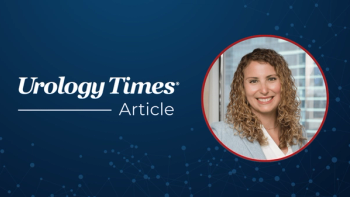
Streamline your billing without missing charges
Communication of charges from the physician or mid-level provider to the billing staff is often a weak link in the billing process in a physician's office.
Key Points
These missed opportunities fall into three major categories:
Each of these problems requires that the service provider pay more attention to coding and documentation. Providers are rightfully focused on providing quality care to their patients, but an office with higher expenses and lower income each year will eventually run into an inevitable cash shortfall. Income shortfalls do not make for the provision of quality medicine.
Self denial
The practice's first error (failure to bill E&M with procedure) falls under the category of a self denial. Self denials are common among all physician offices, and occur for a variety of reasons. Most office managers, administrators, and billing staff are measured on performance, but sometimes these measures can backfire and can be detrimental to the practice income. One measure that practices commonly use is percentage collections of expected income. This requires that contracted rates are loaded and that payments received are measured against this number to provide a collection percentage. It's a reasonable measure on first look, but the unfortunate side effect of paying bonuses for a number close to 100% is omission of services that may be denied from the charges. This performance measure may not provide the practice with more income.
Old habits also feed into this self-denial stream. As we have said on numerous occasions, a denial is an opportunity to educate the payer. If a denial is received due to computer-implemented rules and the charge is ethical and payable by other payers, even repeated denials may not be a bad thing. However, repeated denials for payers like Medicare and those with whom you have contracts for which the office has agreed to follow published rules and regulations are not acceptable and should be reduced. Obviously, this needs to be weighed in each case, but a repeat denial of a procedure for which a ruling is reversed is easy money. An investment in appeals is time well spent. Remarkably, a large percentage of denied claims are never appealed. Ultimately, an unappealed denial will lead to more denials.
Understand the basics
The sample office's other three errors were traced back to the first missed opportunity ("services not reported or reported incorrectly"), but could just as easily have occurred under the second missed opportunity ("services implied but not completely documented and not charged by abstracting staff"). In short, only the service provider can document the services provided.
Abstracting charges from provider notes or reviewing notes prior to billing for services is often used as an excuse not to learn coding rules and regulations. Although it is not the best use of time for a provider to focus on learning each and every rule for every payer, it is good practice for the provider to understand the basics. Clear documentation providing excellent support for the services provided will lead to more accurate billing and increased reimbursement.
The best revenue-producing offices are those in which the doctor, non-physician provider (physician assistant, nurse practitioner, clinical nurse specialist), and nursing staff mark each service provided for each patient on a superbill or communication sheet. The communication of these charges is then checked for billing rules by experienced staff with access to up-to-date rules and regulations. Further analysis by automated claim-scrubbing software is of great assistance as well. Finally, these high producers consistently appeal.
In these offices, the providers' coding eliminates the administrative overhead associated with staff reading office notes and operative notes, with the exception of intermittent audits. The emphasis on code selection by the provider will also provide additional incentive to produce documentation supportive of the services reported. There is no substitute for clinical understanding of the service mix. Additionally, by focusing administrative personnel on pre-coded communication sheets, appeals, and rules collections, the office can generate a better return on investment.
Electronic medical records will eventually make this process even easier with templates and macros for each service provided. Until you become automated, consider that the average urology practice generates 80% of its revenue through 20 to 30 services codes. Learn about the 80% first, and set up communication sheets as well as dictation patterns or forms to reflect the bulk of your practice. Once you have mastered the 80%, the re-maining 20% can be broken down into repeat services and unique circumstances. Repeat services can be added to the forms or dictation patterns and communication sheets. Unique services can be tackled on an as-needed basis.
Another tool is data from practices other than your own. At present, the best way to obtain shared data is through meetings and seminars. However, the increase of electronic explanation of benefits now allows grouped collection of payment information for analysis and comparison. Soon these data sets will provide data that can level the playing field for even the smaller office.
A comprehensive billing approach with provider input, participation, and knowledge is essential for today's urology practice. Data, including shared payer and comparable clinical data, will enhance the effective production of clinical and administrative staff. Improved administration and increased productivity and efficiency are critical for the future.
Urologist Ray Painter, MD, is president of Physician Reimbursement Systems, Inc., in Denver and is also publisher of Urology Coding and Reimbursement Sourcebook. Mark Painter is CEO of PRS Urology SC in Denver.
Disclaimer: The information in this column is designed to be authoritative, and every effort has been made to ensure its accuracy at the time it was written. However, readers are encouraged to check with their individual carrier or private payers for updates and to confirm that this information conforms to their specific rules.
Newsletter
Stay current with the latest urology news and practice-changing insights — sign up now for the essential updates every urologist needs.


















